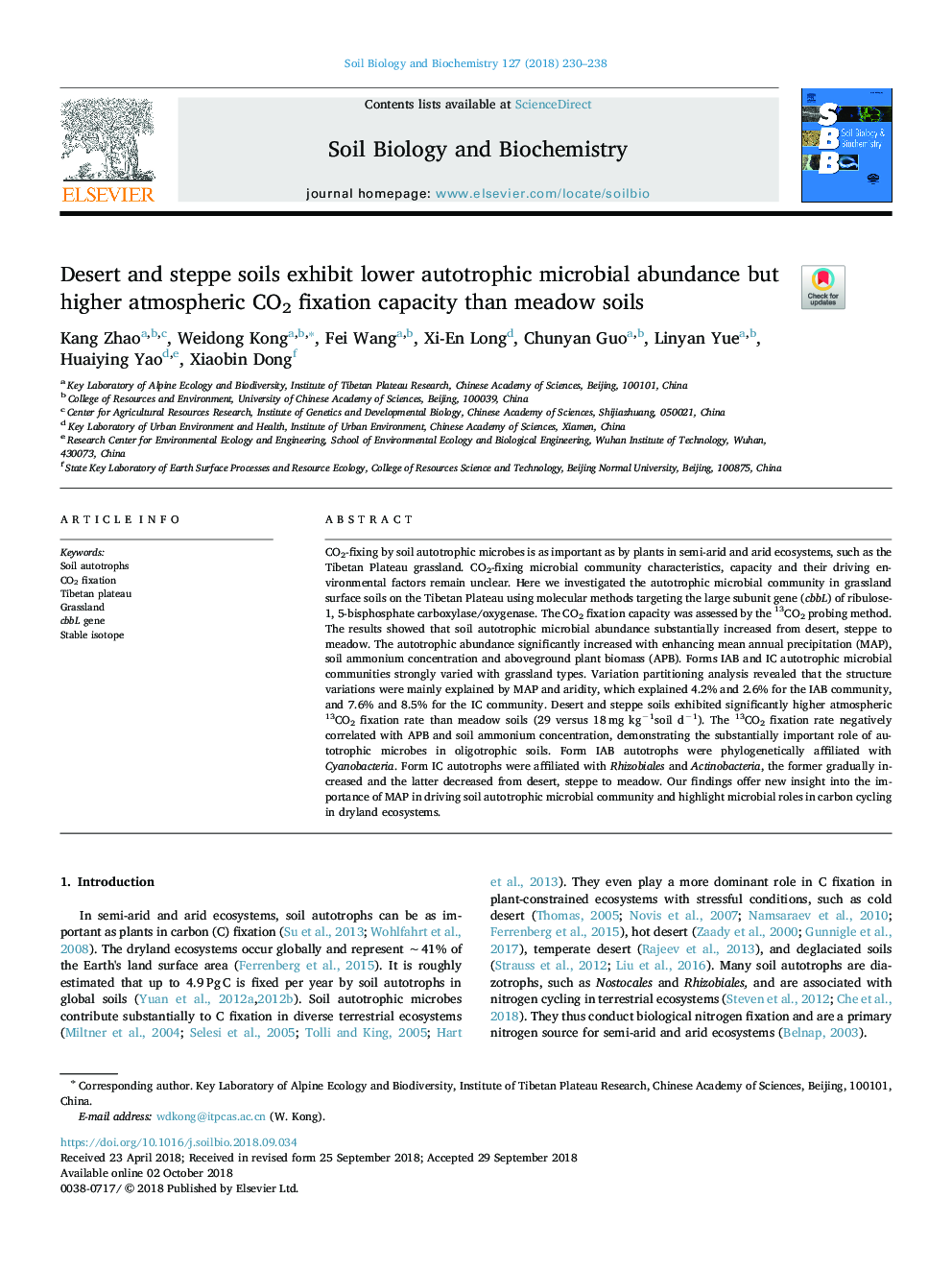| کد مقاله | کد نشریه | سال انتشار | مقاله انگلیسی | نسخه تمام متن |
|---|---|---|---|---|
| 11026006 | 1666443 | 2018 | 9 صفحه PDF | دانلود رایگان |
عنوان انگلیسی مقاله ISI
Desert and steppe soils exhibit lower autotrophic microbial abundance but higher atmospheric CO2 fixation capacity than meadow soils
دانلود مقاله + سفارش ترجمه
دانلود مقاله ISI انگلیسی
رایگان برای ایرانیان
کلمات کلیدی
موضوعات مرتبط
علوم زیستی و بیوفناوری
علوم کشاورزی و بیولوژیک
دانش خاک شناسی
پیش نمایش صفحه اول مقاله

چکیده انگلیسی
CO2-fixing by soil autotrophic microbes is as important as by plants in semi-arid and arid ecosystems, such as the Tibetan Plateau grassland. CO2-fixing microbial community characteristics, capacity and their driving environmental factors remain unclear. Here we investigated the autotrophic microbial community in grassland surface soils on the Tibetan Plateau using molecular methods targeting the large subunit gene (cbbL) of ribulose-1, 5-bisphosphate carboxylase/oxygenase. The CO2 fixation capacity was assessed by the 13CO2 probing method. The results showed that soil autotrophic microbial abundance substantially increased from desert, steppe to meadow. The autotrophic abundance significantly increased with enhancing mean annual precipitation (MAP), soil ammonium concentration and aboveground plant biomass (APB). Forms IAB and IC autotrophic microbial communities strongly varied with grassland types. Variation partitioning analysis revealed that the structure variations were mainly explained by MAP and aridity, which explained 4.2% and 2.6% for the IAB community, and 7.6% and 8.5% for the IC community. Desert and steppe soils exhibited significantly higher atmospheric 13CO2 fixation rate than meadow soils (29 versus 18â¯mg kgâ1soil dâ1). The 13CO2 fixation rate negatively correlated with APB and soil ammonium concentration, demonstrating the substantially important role of autotrophic microbes in oligotrophic soils. Form IAB autotrophs were phylogenetically affiliated with Cyanobacteria. Form IC autotrophs were affiliated with Rhizobiales and Actinobacteria, the former gradually increased and the latter decreased from desert, steppe to meadow. Our findings offer new insight into the importance of MAP in driving soil autotrophic microbial community and highlight microbial roles in carbon cycling in dryland ecosystems.
ناشر
Database: Elsevier - ScienceDirect (ساینس دایرکت)
Journal: Soil Biology and Biochemistry - Volume 127, December 2018, Pages 230-238
Journal: Soil Biology and Biochemistry - Volume 127, December 2018, Pages 230-238
نویسندگان
Kang Zhao, Weidong Kong, Fei Wang, Xi-En Long, Chunyan Guo, Linyan Yue, Huaiying Yao, Xiaobin Dong,